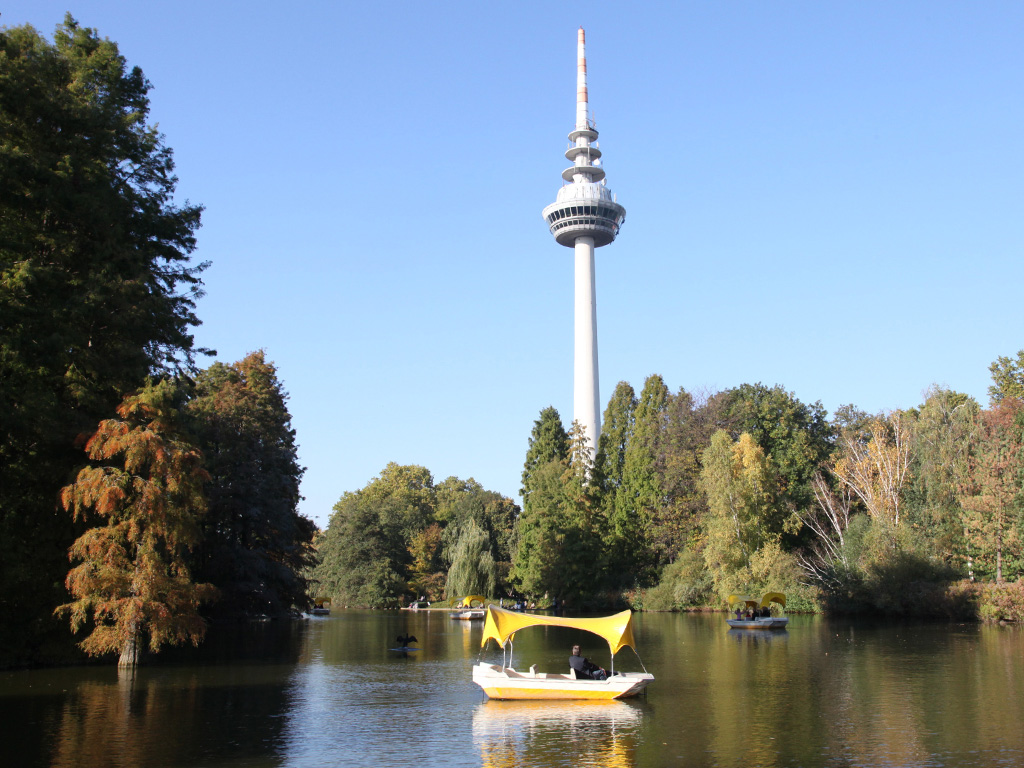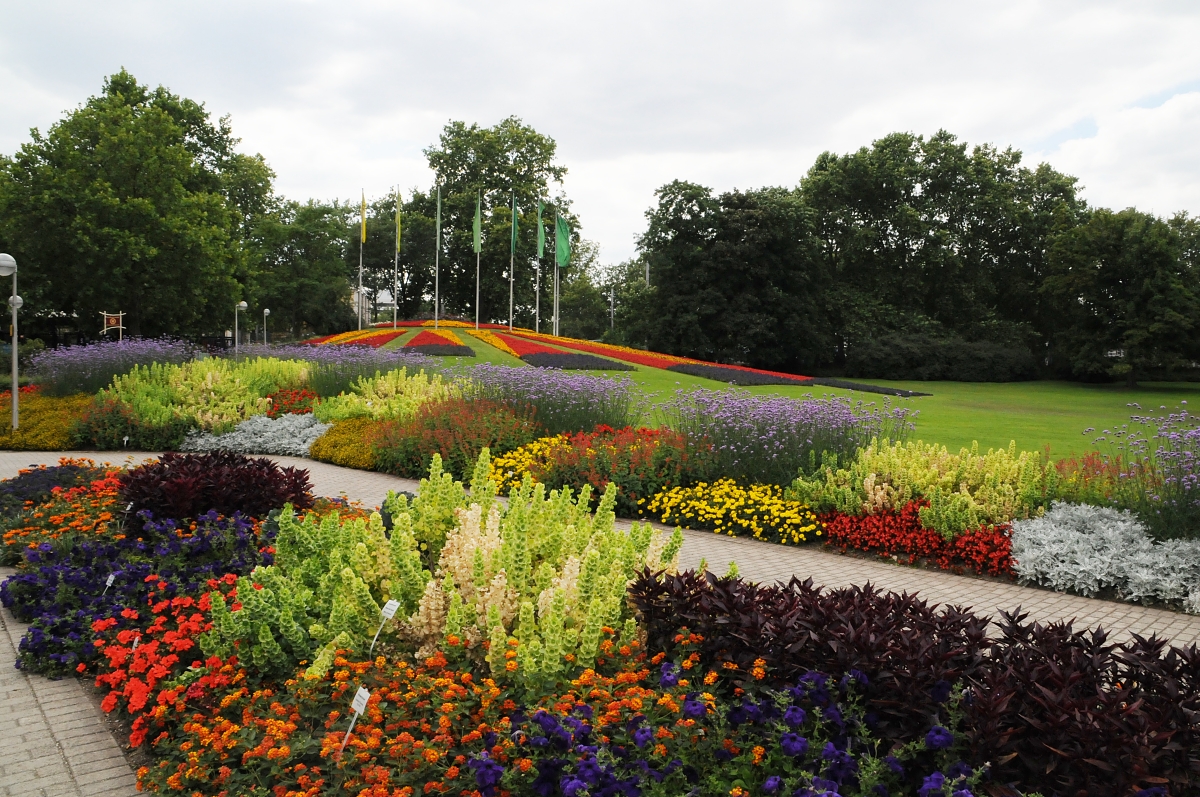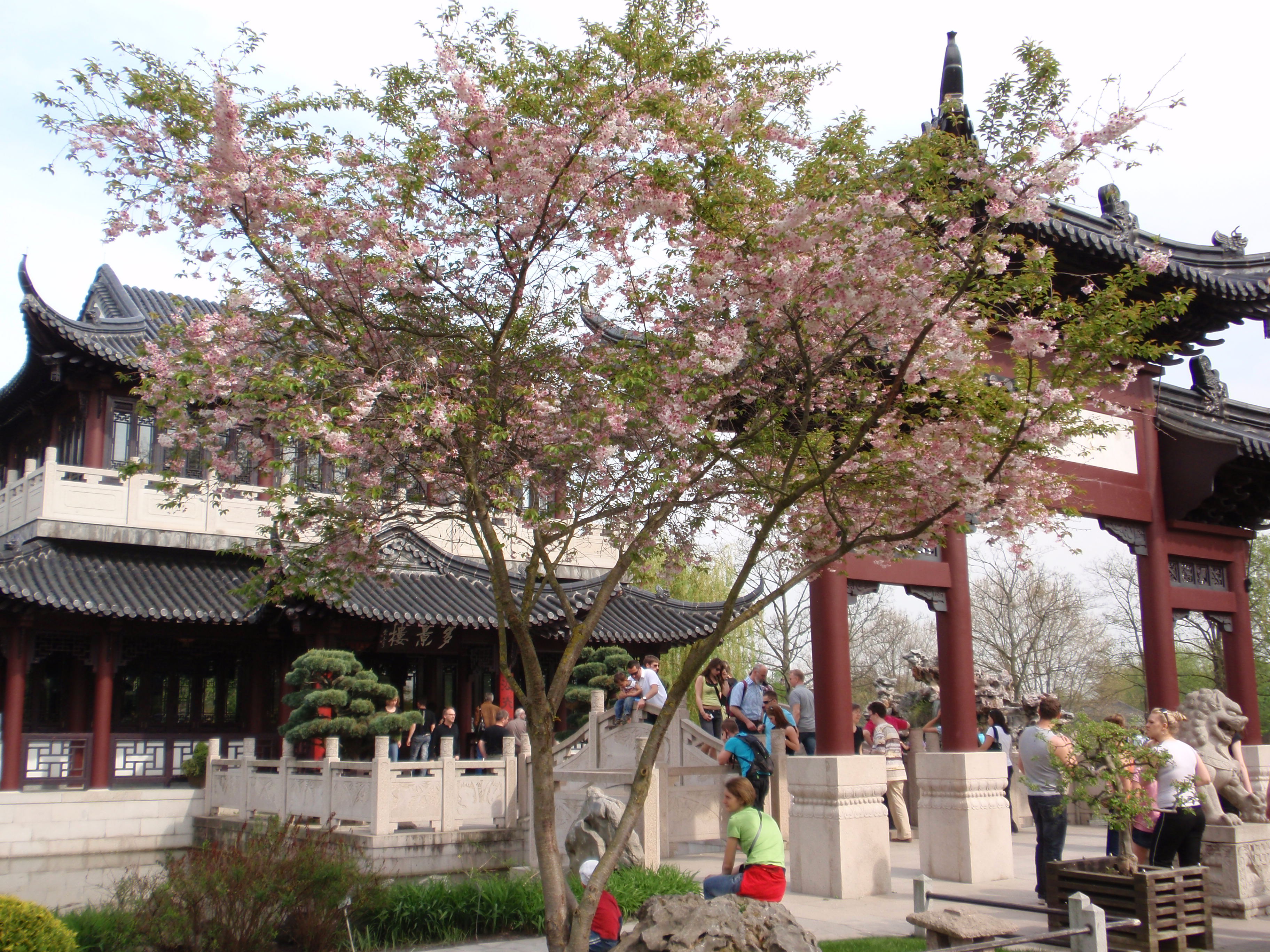Luisenpark Mannheim Gondolettas.JPG on:
[Wikipedia]
[Google]
[Amazon]

 The Luisenpark is a municipal park in
The Luisenpark is a municipal park in


 The park contains a number of amusements and gardens, including a Chinese garden, rose garden, arboretum, and greenhouses for display and for
The park contains a number of amusements and gardens, including a Chinese garden, rose garden, arboretum, and greenhouses for display and for
Park map
Basic Information on the Park in english (City Marketing Mannheim)BGCI entry
{{Authority control Buildings and structures in Mannheim Botanical gardens in Germany Gardens in Baden-Württemberg Tourist attractions in Mannheim

 The Luisenpark is a municipal park in
The Luisenpark is a municipal park in Mannheim
Mannheim (; Palatine German: or ), officially the University City of Mannheim (german: Universitätsstadt Mannheim), is the second-largest city in the German state of Baden-Württemberg after the state capital of Stuttgart, and Germany's ...
, Baden-Württemberg
Baden-Württemberg (; ), commonly shortened to BW or BaWü, is a German state () in Southwest Germany, east of the Rhine, which forms the southern part of Germany's western border with France. With more than 11.07 million inhabitants across a ...
, Germany
Germany,, officially the Federal Republic of Germany, is a country in Central Europe. It is the second most populous country in Europe after Russia, and the most populous member state of the European Union. Germany is situated betwe ...
. It is located on the left bank of the Neckar river and has an area of 41 hectares. The lower Luisenpark (''Unterer Luisenpark'') is the oldest part which is conserved as a historic garden. The upper Luisenpark (''Oberer Luisenpark'') includes various attractions, such as a greenhouse, an arboretum, a Chinese garden, "gondoletta
Gondoletta is a Water ride in amusement park Efteling in the Netherlands.
It was developed by Intamin (as a ''Tow boat ride''); designed by Ton van de Ven and started operating in 1981.
History and details
''Gondoletta'' is the attraction with ...
" boats, and a variety of facilities for children. Along with the Herzogenriedpark (33 hectares; located on the other side of Neckar) the upper Luisenpark is operated by the non-profit Stadtpark Mannheim GmbH.
History
The Luisenpark was built between 1892 and 1903, formed upon the legacy of scientist Carl William Casimir Fox, who bequeathed 20,000Deutsche Marks
The Deutsche Mark (; English language, English: ''German mark''), abbreviated "DM" or "D-Mark" (), was the official currency of West Germany from 1948 until 1990 and later the unified Germany from 1990 until the adoption of the euro in 2002. I ...
in his will to the city of Mannheim
Mannheim (; Palatine German: or ), officially the University City of Mannheim (german: Universitätsstadt Mannheim), is the second-largest city in the German state of Baden-Württemberg after the state capital of Stuttgart, and Germany's ...
for the making of a new park. This amount was not sufficient for total financing, but formed a foundational start. Construction work began at the end of 1892. The design of the park was done by the Siesmayer brothers, Frankfurt
Frankfurt, officially Frankfurt am Main (; Hessian: , " Frank ford on the Main"), is the most populous city in the German state of Hesse. Its 791,000 inhabitants as of 2022 make it the fifth-most populous city in Germany. Located on it ...
landscape gardeners.
Conditions for the ascent of the Luisenparks for supraregional meaning was the resolution of the Mannheimer local council on November 18, 1969, to develop the Luisenpark as well as the Herzogenriedpark (to accomplish the Bundesgartenschau 1975). At that time the park was extended to a size of 41 hectares
The hectare (; SI symbol: ha) is a non-SI metric unit of area equal to a square with 100-metre sides (1 hm2), or 10,000 m2, and is primarily used in the measurement of land. There are 100 hectares in one square kilometre. An acre is a ...
by the inclusion of a former racecourse.
The sales of 186,000 season tickets, which was not even reached by all federal horticultural shows, the number of 8.1 million visitors, and the removal of the Luisenpark fence, convinced the city council to operate the Luisenpark as city park with entrance fee. On October 21, 1975, the decision was made for a closed Luisenpark with an entrance fee. At first they agreed on two trial years, but over 38,000 annual tickets sold were a convincing argument to keep the park in this form.
Name
The Luisenpark is named after princess Luise Marie Elizabeth ofPrussia
Prussia, , Old Prussian: ''Prūsa'' or ''Prūsija'' was a German state on the southeast coast of the Baltic Sea. It formed the German Empire under Prussian rule when it united the German states in 1871. It was ''de facto'' dissolved by an ...
, a close relative of three German
German(s) may refer to:
* Germany (of or related to)
** Germania (historical use)
* Germans, citizens of Germany, people of German ancestry, or native speakers of the German language
** For citizens of Germany, see also German nationality law
**Ge ...
emperors: William I
William I; ang, WillelmI (Bates ''William the Conqueror'' p. 33– 9 September 1087), usually known as William the Conqueror and sometimes William the Bastard, was the first Norman king of England, reigning from 1066 until his death in 10 ...
was her father, Frederick III was her brother and William II was her nephew.
On September 26, 1856, when she was eighteen-years old, she married the Prince Regent, later Grand Duke of Baden
Baden (; ) is a historical territory in South Germany, in earlier times on both sides of the Upper Rhine but since the Napoleonic Wars only East of the Rhine.
History
The margraves of Baden originated from the House of Zähringen. Baden i ...
, Frederick I Frederick I may refer to:
* Frederick of Utrecht or Frederick I (815/16–834/38), Bishop of Utrecht.
* Frederick I, Duke of Upper Lorraine (942–978)
* Frederick I, Duke of Swabia (1050–1105)
* Frederick I, Count of Zoll ...
. She carried out crucial pioneering work for the Wohlfahrtspflege in Baden. As an eighty-year-old, she, along with her daughter, Queen Victoria of Sweden, had to flee through a window from marauding soldiers attempting to take the castle in Karlsruhe
Karlsruhe ( , , ; South Franconian: ''Kallsruh'') is the third-largest city of the German state (''Land'') of Baden-Württemberg after its capital of Stuttgart and Mannheim, and the 22nd-largest city in the nation, with 308,436 inhabitants. ...
.
Attractions


 The park contains a number of amusements and gardens, including a Chinese garden, rose garden, arboretum, and greenhouses for display and for
The park contains a number of amusements and gardens, including a Chinese garden, rose garden, arboretum, and greenhouses for display and for tree fern
The tree ferns are arborescent (tree-like) ferns that grow with a trunk elevating the fronds above ground level, making them trees. Many extant tree ferns are members of the order Cyatheales, to which belong the families Cyatheaceae (scaly tree ...
s.
* The Kutzerweiher (40,000 m2), a lake forming a side-channel (slough) of the (old) Neckar river. Gondolettas, tow boat ride: boats pulled by an underwater rope, follow a 1,840 meter long looped course around the lake.
* An open-air stage with approximately 1,000 seats has offered since 2006 a place for concerts, operas, musical shows and plays.
* The Chinese garden (5,000 m2), named "garden of the many views" ( zh, 多景园 ''Duojingyuan'', german: Garten der vielen Ansichten), and its tea house were built in co-operation with Mannheim's Chinese twin city Zhenjiang
Zhenjiang, alternately romanized as Chinkiang, is a prefecture-level city in Jiangsu Province, China. It lies on the southern bank of the Yangtze River near its intersection with the Grand Canal. It is opposite Yangzhou (to its north) and ...
(province Jiangsu
Jiangsu (; ; pinyin: Jiāngsū, alternatively romanized as Kiangsu or Chiangsu) is an eastern coastal province of the People's Republic of China. It is one of the leading provinces in finance, education, technology, and tourism, with its ca ...
), the Klaus Tschira charitable trust in Heidelberg
Heidelberg (; Palatine German language, Palatine German: ''Heidlberg'') is a city in the States of Germany, German state of Baden-Württemberg, situated on the river Neckar in south-west Germany. As of the 2016 census, its population was 159,914 ...
, and the East Asia Institute (Ostasieninstitut) Ludwigshafen. The donation of 1,77 million Deutsche Mark
The Deutsche Mark (; English: ''German mark''), abbreviated "DM" or "D-Mark" (), was the official currency of West Germany from 1948 until 1990 and later the unified Germany from 1990 until the adoption of the euro in 2002. In English, it was ...
(DM) from the estate of Diplom-Kaufmann Georg Schmuck, provided the financial foundation for the garden and tea house.
* The ''Pflanzenschauhaus'' (2,700 m2), a greenhouse and exhibition garden, is located at the site of the Palmenhaus (palm house) which was destroyed in the Second World War
World War II or the Second World War, often abbreviated as WWII or WW2, was a world war that lasted from 1939 to 1945. It involved the vast majority of the world's countries—including all of the great powers—forming two opposi ...
. It contains a butterfly
Butterflies are insects in the macrolepidopteran clade Rhopalocera from the order Lepidoptera, which also includes moths. Adult butterflies have large, often brightly coloured wings, and conspicuous, fluttering flight. The group comprise ...
house, bird
Birds are a group of warm-blooded vertebrates constituting the class Aves (), characterised by feathers, toothless beaked jaws, the laying of hard-shelled eggs, a high metabolic rate, a four-chambered heart, and a strong yet lightweig ...
exhibits, as well as salt and fresh water aquariums
An aquarium (plural: ''aquariums'' or ''aquaria'') is a vivarium of any size having at least one transparent side in which aquatic plants or animals are kept and displayed. Fishkeepers use aquaria to keep fish, invertebrates, amphibians, a ...
.
* Towering over the Luisenpark is a 205 meter high telecommunication
Telecommunication is the transmission of information by various types of technologies over wire, radio, optical, or other electromagnetic systems. It has its origin in the desire of humans for communication over a distance greater than that fe ...
tower (''Fernmeldeturm'') with its rotating restaurant at 125 meters above the ground.
* The ''Spielwiese'' (2,700 m2), a large playground and leisure meadow
A meadow ( ) is an open habitat, or field, vegetated by grasses, herbs, and other non- woody plants. Trees or shrubs may sparsely populate meadows, as long as these areas maintain an open character. Meadows may be naturally occurring or arti ...
, located on the grounds of the original race track, borders on a model farm with domestic
Domestic may refer to:
In the home
* Anything relating to the human home or family
** A domestic animal, one that has undergone domestication
** A domestic appliance, or home appliance
** A domestic partnership
** Domestic science, sometimes c ...
animals enclosures, and a Chinese tea house.
* The ''Heinrich-Vetter-Weg'' is a trail lined by more than 20 sculptures from the collection of Heinrich Vetter, by artists such as Amadeo Gabino, Kubach-Wilmsen, Ben Muthofer and Karlheinz Oswald
Karlheinz Oswald (born 1958) is a German sculptor known for his portraits and cast iron sculptures, many of dancers, often displayed in public places. He studied at the Johannes Gutenberg University in Mainz from 1981, and between 1983 and 1988 w ...
See also
*List of botanical gardens in Germany
This is a list of botanical gardens in Germany. This list is intended to contain all significant botanical gardens and arboreta in Germany.
List
See also
* List of botanical gardens
References
Zentralregister biologischer Forschungssammlung ...
References
*External links
*Park map
Basic Information on the Park in english (City Marketing Mannheim)
{{Authority control Buildings and structures in Mannheim Botanical gardens in Germany Gardens in Baden-Württemberg Tourist attractions in Mannheim